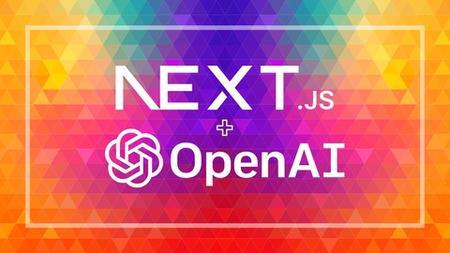English | MP4 | AVC 1920×1080 | AAC 44KHz 2ch | 40 lectures (5h 9m) | 1.62 GB
Next JS & OpenAI GPT3.5: Build an SEO-friendly blog post gen app with auth0, GPT, stripe payments, tailwind, & MongoDB
Don’t get left behind! Increase your value as a web developer today by learning how to integrate AI in to your projects!
Welcome to the exciting world of AI-powered, next-generation, Next JS apps!
In this course we will create a fictional Software-As-A-Service (SAAS) product called “BlogStandard”. We’ll build “BlogStandard” using a combination of Next.js, OpenAI’s GPT, MongoDB, Auth0, Stripe, and Tailwind CSS. BlogStandard allows users to create an account (handled by auth0), purchase tokens (handled by stripe), and spend those tokens to generate blog posts, powered by OpenAI’s GPT API. User’s tokens and generated blog posts will be stored using MongoDB.
In this comprehensive online course, you’ll learn how to harness the power of these cutting-edge technologies to build a fast, responsive, and dynamic web application that generates high-quality blog posts using AI. With step-by-step guidance, you’ll gain hands-on experience working with each of these technologies to bring your vision to life.
First, we’ll dive into Next.js, a popular framework for building web applications. You’ll learn how to create fast and responsive pages, manage routing, and integrate APIs to build a powerful and dynamic web application.
Next, we’ll explore OpenAI’s GPT, the state-of-the-art language generation model, and learn how to use it to generate high-quality blog posts. You’ll also discover how to integrate MongoDB, a scalable and flexible NoSQL database, to store and manage data for our application.
In addition, you’ll learn how to use Auth0, a powerful identity management platform, to handle user authentication and authorization, and Stripe, a leading payment processor, to handle transactions and payment processing. Finally, you’ll learn how to use Tailwind CSS, a modern CSS framework, to style and design your application, bringing your vision to life.
By the end of this course, you’ll have the skills and knowledge you need to build your own AI-powered app and unleash the full potential of AI in your web development projects. So what are you waiting for? Join now and start your journey to the exciting world of AI-powered Next JS apps!
What you’ll learn
- Build your own SAAS products powered by AI and Next JS
- Use OpenAI’s GPT to implement AI generated content in your apps
- Authenticate your Next JS apps with Auth0
- Style your Next JS apps with Tailwind CSS
- Store data for your Next JS apps with MongoDB
- Charge customers using stripe
Table of Contents
Introduction & project setup
Project setup
Udemy ratings and reviews
Set up all required routes for our app
Authentication & authorization with Auth0
Set up auth0 for authentication
Set the auth state & user information if logged in
Implement protected routes that are only accessible if logged in
Creating the app layout with Tailwind CSS
Create the basic AppLayout component
Implementing the sidebar & styling with Tailwind CSS
Implementing the sidebar footer
Create the sidebar header & roll out the AppLayout for all relevant pages
Create the app logo component using Google Fonts & FontAwesome
Create the homepage _ main landing page, and finish off the sidebar header
Generate blog posts with OpenAI’s GPT API and store in MongoDB
Setting up our project to work with GPT
Refine the OpenAI prompt and render the results
Pass topic and keywords to the generatePost API endpoint
UPDATE Using the gpt 3 5 turbo model
Set up MongoDB
Implement add tokens functionality and store in MongoDB
Save generated post data to MongoDB
Load the post data for a particular post page
Auto navigate to a post after it’s generated
Render the post content for a particular post page
Render list of available posts in the sidebar
Implementing stripe payments
Set up stripe
Implement stripe webhooks
Styling updates, fixes, and data validation
Fix Font Awesome flash of massive icon on load in production
Styling updates _ loading icon
Validating form data when generating new posts
Implement load more posts and delete post
Create posts context and retrieve first 5 posts
Create getPosts endpoint
Hide load more posts button and fix disappearing posts in sidebar
Fix posts in sidebar on initial post load_2
Create deletePost endpoint
Create delete post UI _ call deletePost endpoint
Delete post from sidebar
Refactor posts context to use reducer instead of state
Deploy
Deploy on DigitalOcean
Resolve the captcha to access the links!
